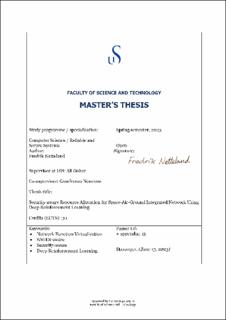| dc.description.abstract | A Space-Air-Ground Integrated Network (SAGIN) has been proposed to extend communication network service coverage to consumer-oriented and industrial sectors where communication network coverage is either limited or unavailable. To effectively use the space, air, and ground hardware resources, Network Function Virtualization (NFV) is introduced into SAGIN. NFV enables the deployment and management of services that are represented as Virtual Networks (VN) composed of Virtual Network Functions (VNF) onto the SAGIN hardware through hardware virtualization. This enables SAGIN to support services with distinct demands from both consumer-oriented and industrial sectors.
However, by introducing NFV into SAGIN, new security vulnerabilities arise. For instance, if a malicious entity gains access to the virtualized hardware, all services utilizing the hardware are exposed to attack.
When deploying a VN onto the SAGIN hardware, also known as the Substrate Network (SN), it must be decided which SN Node (SNN) should host each VN Node (VNN) and which SN Links (SNL) should host each VN Link (VNL), also known as the Virtual Network Embedding (VNE) problem. This thesis proposes a solution to VNE in SAGIN using Deep Reinforcement Learning (DRL) while accounting for the security concerns related to NFV. To our knowledge, this has yet to be explored by other works.
We compare our solution with the well-known Global Resource Capacity (GRC) solution strategy using the acceptance rate, revenue, cost, and revenue-to-cost metrics. Our DRL-based solution strategy shows competitive performance in all metrics. | |
